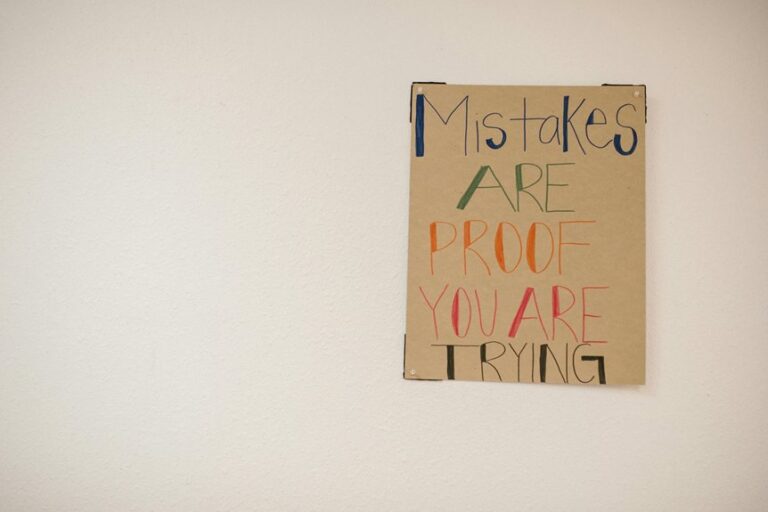Everyone wants mental toughness. They act like it’s some magical superpower that only elite athletes and Navy SEALs possess. Wrong.
And if you’re sitting there thinking you missed out on the “tough mindset” gene lottery, I’ve got news for you – you’re still wrong.
So, can mental toughness be learned or is it inborn?
Mental toughness isn’t something you’re born with – it’s a skill you can build, just like working out at the gym. You’ll need to embrace discomfort, face challenges head-on, and consistently push your limits through deliberate practice.
It’s training your “mental muscles” through daily micro-challenges, whether that’s taking cold showers or tackling fears. Your brain’s actually pretty amazing at adapting when you give it the right kind of workout, and there’s a whole toolbox of strategies waiting to change your mindset.
Key Takeaways
- Mental toughness is a learnable skill that can be developed through consistent practice and dedicated effort, similar to building physical strength.
- Like physical training, mental toughness requires pushing through discomfort, facing challenges, and learning from setbacks to grow stronger.
- Specific strategies like micro-challenges, mindfulness practices, and positive self-talk can effectively build mental toughness over time.
- Mental toughness develops through deliberate practice and experience rather than being a fixed, innate trait.
- Regular documentation, tracking progress, and measuring stress-handling capabilities demonstrate mental toughness can improve with targeted training.
Defining Mental Toughness
Mental toughness is your psychological armor – a combination of resilience, focus, and unwavering determination that helps you push through challenges and maintain high performance under pressure.
It’s the inner strength that separates those who crack under pressure from those who thrive in it, like a muscle that gets stronger with intentional training and real-world stress testing.
- Core components include emotional control, confidence maintenance, ability to handle setbacks, and maintaining focus during high-pressure situations.
- Shows up in daily behaviors like consistent morning routines, sticking to commitments even when motivation dips, and bouncing back quickly from failures.
- Develops through deliberate exposure to challenging situations and conscious practice of stress management techniques, much like building physical strength.
- Can be measured through observable traits like goal persistence, anxiety management, positive self-talk patterns, and recovery speed after setbacks.
While some may possess natural advantages, mental fortitude can be developed and enhanced through dedicated practice and experience.
Examples of Mental Toughness
Real-world examples of mental toughness can be found everywhere, from the student who keeps studying after failing an important exam to the athlete who pushes through excruciating pain to finish a marathon during intense heat and exhaustion.
You’ll see psychological strategies and resilience training in action when you look at success stories of real life athletes who’ve conquered seemingly impossible challenges, like breaking world records or returning from career-threatening injuries.
Growth mindset entrepreneurs consistently demonstrate increasing mental fortitude throughout their business journey.
| Mental Toughness Area | Example | Key Strategy |
|---|---|---|
| Performance Improvement | Navy SEAL training | Stress management |
| Goal Achievement | Cancer survivor running marathon | Personal anecdotes |
| Overcoming Obstacles | Entrepreneur after bankruptcy | Motivation techniques |
When you’re facing your own challenges, like job losses, relationship struggles, or personal setbacks, remember that mental toughness isn’t just for elite athletes – it’s for anyone willing to push beyond their comfort zone and face adversity head-on.
You’ll find that the most inspiring stories often come from ordinary people who’ve refused to quit when things got tough, demonstrating remarkable resilience through life-changing circumstances and daily struggles.
How Mental Toughness Can Be Learned
Anyone can develop mental toughness through deliberate practice and the right mindset – yes, even if you’re currently stress-crying into your pillow at night.
Successful entrepreneurs understand that entrepreneurial resilience comes from pushing through discomfort and learning from setbacks.
Below, we’ll walk through some strategies for building mental resilience, managing discomfort, and changing challenges into opportunities for growth.
Here’s how mental toughness can be learned and developed.
Mental toughness grows through consistent, deliberate practice.
Mental toughness comes from pushing yourself repeatedly through challenges, much like building muscle through consistent workouts – it’s a skill that develops through intentional, focused practice rather than magically appearing overnight.
The path to developing mental toughness starts with deliberately putting yourself in uncomfortable situations that push your limits without breaking you.
This might mean taking on slightly harder tasks at work, extending your workout by five more minutes when you’re tired, or speaking up in meetings even when your heart’s racing.
The key is to choose challenges that stretch you while remaining achievable – you wouldn’t try to bench press 300 pounds on your first day at the gym, and you shouldn’t expect to conquer your biggest fears immediately either.
Just as athletes track their progress and adjust their training, you need to monitor your mental toughness journey. Keep a journal of the challenges you face, how you handled them, and what you learned. When you mess up (and you will), treat it like valuable data rather than failure.
Maybe you cracked under pressure during a presentation – great, now you know exactly where you need more practice. Building mental toughness isn’t centered on being perfect; it revolves around getting back up faster each time you stumble.
The beauty of deliberately practicing mental toughness is that it compounds over time. Each small victory builds confidence for the next challenge, creating a positive spiral of growth.
When you consistently push through discomfort in controlled doses, your brain literally rewires itself to handle stress better. It’s comparable to playing a video game – you start at level one and gradually work your way up, getting stronger and more skilled with each challenge you overcome.
Business resilience is strengthened when you develop mental toughness through deliberate practice and consistent effort.
- Start with “micro-challenges” daily: Take cold showers, do one thing that scares you slightly, or hold difficult conversations instead of avoiding them.
- Create specific mental toughness workouts: Set a challenging task and complete it when you’re already tired or stressed, gradually increasing difficulty.
- Document and measure progress: Track how you handle stressful situations today compared to last month, celebrating improvements and analyzing setbacks.
- Build a support system: Find training partners or mentors who understand your goals and will hold you accountable while offering constructive feedback.
Set challenging goals to push your limits and build resilience.
Establishing objectives that make your palms sweat isn’t solely concerned with hitting targets – it revolves around expanding your comfort zone until it snaps like a rubber band.
When you’re setting goals that genuinely challenge you, you’re actually rewiring your brain to handle more stress and uncertainty, building neural pathways that strengthen your resilience.
| Goal Setting Techniques | Comfort Zone Status | Growth Indicator |
|---|---|---|
| Start Small | Safe Harbor | Beginner |
| Push 10% More | Edge of Comfort | Developing |
| Take Calculated Risks | Stretching | Advancing |
| Face Your Fears | Breaking Through | Experienced |
| Go All In | Complete Reset | Master Level |
The art of limit pushing is vital to personal growth, much like building calluses for your mind through consistent, incremental challenges.
Starting with goals that make you slightly uncomfortable, then gradually cranking up the intensity until what once seemed impossible becomes your new normal, allows you to systematically expand your capabilities and confidence levels.
Embrace failure as a lesson, not a setback.
Embracing failure as a lesson means altering those gut-punch moments of falling short into powerful stepping stones toward mental toughness, rather than viewing them as evidence of your limitations.
The first step in reframing failure involves changing your internal dialogue when things go sideways.
Instead of muttering “I’m terrible at this” or “I knew I couldn’t do it,” train yourself to ask “What specific thing threw me off?” or “Which part needs more work?”
This shift might feel awkward initially – like trying to write with your non-dominant hand – but it gradually rewires your brain to approach setbacks with curiosity rather than defeat.
Most people sprint away from failure analysis like it’s a hungry bear chasing them, but diving deep into your mishaps (while keeping enough emotional distance to stay objective) reveals invaluable patterns.
Maybe you notice you tend to stumble when you’re sleep-deprived, or perhaps your focus shatters under time pressure.
Each “failed” attempt adds another piece to your personal performance puzzle, showing you exactly where to shore up your mental game.
The real magic happens when you start actively seeking challenges that might knock you down. Picture failure as your slightly annoying but brilliant professor – sure, the lessons can sting, but they’re precisely what you need to level up.
When you catch yourself playing it safe to avoid potential failures, that’s your cue to push harder. Remember, mental toughness grows in the spaces where comfort ends and controlled chaos begins.
- Keep a “Failure Journal” documenting what went wrong, what you learned, and specific adjustments for next time.
- Set “Growth Goals” alongside performance goals – measure success by lessons learned rather than just outcomes achieved.
- Create a personal post-failure routine: take 10 deep breaths, write down three objective observations, and identify one immediate improvement action.
- Share your failures with trusted friends or mentors – verbalizing the experience reduces its emotional charge and opens you to fresh perspectives.
Develop self-discipline by sticking to routines, even when hard.
While learning from failure builds mental muscle, the daily grind of showing up – even when you’d rather watch Netflix in your pajamas – is what converts that muscle into steel.
| Time Frame | Routine Benefits | Consistency Rewards |
|---|---|---|
| Week 1-2 | Habit Formation Begins | Less Mental Resistance |
| Week 3-4 | Discipline Development | Increased Focus |
| Month 2-3 | Resilience Building | Better Performance |
| Month 4+ | Mastery Level | Automatic Excellence |
You’ve got to accept routine challenges like they’re your morning coffee – non-negotiable and critical for daily progress.
Start with commitment strategies that actually stick: pick one key habit, do it at the same time daily, and use persistence techniques like tracking streaks or maintaining a progress journal.
It’s not sexy, but neither is most stuff that actually works in the long term.
Building discipline through routines may feel monotonous at first, but the compound effect of showing up day after day creates remarkable transformations in both mindset and capability.
Practice mindfulness to stay focused in high-pressure moments.
Mindfulness in high-pressure situations means training your brain to stay anchored in the present moment rather than spiraling into worry about outcomes or past mistakes.
Starting mindfulness practice doesn’t require meditation cushions or Buddhist retreats – you can begin right where you’re with simple breath awareness.
Take three deliberate breaths, feeling the sensation of air moving through your nose and filling your lungs. When your mind wanders (and it absolutely will), just notice that happening and guide your attention back to your breath, like redirecting a puppy that keeps running off.
This basic exercise builds the mental muscle that helps you stay focused when pressure hits.
The real challenge comes when applying mindfulness during intense moments – like when you’re about to give a major presentation or step onto the field for a championship game.
Your heart’s racing, palms are sweaty, and your brain’s firing off a thousand “what-if” scenarios. This is where consistent practice pays off.
Instead of fighting those physical sensations and thoughts, acknowledge them with a mental nod: “Yep, there’s anxiety showing up” or “I notice my thoughts spinning.”
Then bring your focus back to something concrete in the present – your breath, the feeling of your feet on the ground, or the task directly in front of you.
The beauty of mindfulness lies in its simplicity and portability. You can practice while stuck in traffic, waiting in line, or during your morning coffee.
Each time you catch your mind wandering and bring it back, you’re fundamentally doing a mental push-up.
Over time, this strengthens your ability to maintain focus and composure when it matters most, turning what once felt like overwhelming pressure into manageable challenges.
- Start small: Practice 1-2 minutes of focused breathing during ordinary moments before attempting it in high-stress situations.
- Use physical anchors: Touch your thumb to each finger while counting breaths, or feel the weight of your body in your chair to stay grounded.
- Create environmental triggers: Pick specific daily activities (like opening your laptop or walking through doorways) as reminders to take three mindful breaths.
- Build a pre-performance routine: Develop a short sequence combining mindful breathing with movement (like shoulder rolls or stretching) to center yourself before challenging situations.
Nurture a positive mindset by reframing negative thoughts.
Even though negative thoughts feel automatic and overwhelming at times, you can actually rewire your brain to spot opportunities where others see obstacles.
By practicing mindful awareness and conscious thought patterns, you’ll find this transformation becomes easier with time.
Through positive reframing and cognitive restructuring, you’ll alter those pesky “I can’t” thoughts into “I’m figuring it out” statements that fuel your growth.
This process requires patience and consistent practice, but the results can dramatically improve your outlook on challenges.
| Negative Thought | Positive Reframe |
|---|---|
| “I’m not ready” | “I’m learning and improving” |
| “This is impossible” | “This is challenging but doable” |
| “I’ll probably fail” | “Each attempt teaches me something” |
| “I’m not good enough” | “I’m developing my skills” |
| “It’s too hard” | “It’s making me stronger” |
Your brain’s similar to a smartphone – you can update its operating system through dedicated mental exercises and daily reflection.
When those limiting thoughts pop up, don’t fight them – upgrade them into more constructive alternatives that acknowledge both challenges and possibilities.
Build mental toughness by staying committed during adversity.
Staying committed during tough times doesn’t simply mean gritting your teeth – it concerns developing the psychological muscles to push through discomfort when everything inside you screams to quit.
The first step in building commitment through adversity involves reframing those moments of struggle as opportunities rather than obstacles.
Remember that time you wanted to skip your workout, bail on a challenging project, or give up on a goal? Those moments of resistance are actually your mental gym – each time you choose to stay engaged despite the difficulty, you’re literally rewiring your brain to become more resilient.
Consider it as building calluses – they only develop through friction and pressure.
Most people cave in when things get uncomfortable because they’ve never practiced sitting with discomfort.
Start small – maybe it’s finishing that boring report even when social media beckons, or completing your full workout when your mind begs you to cut it short. Each time you follow through despite the urge to quit, you’re strengthening your commitment muscles.
The key is approaching these challenges with curiosity rather than dread, asking yourself “What can I learn from this?” instead of “How can I escape this?”
The truth about mental toughness is that it’s built in these everyday moments of choice, not solely during major life challenges. When you’re tired, stressed, or discouraged, that’s precisely when you have the opportunity to reinforce your commitment.
Practice acknowledging your discomfort without letting it drive your decisions. Say to yourself, “Yes, this is hard, and I’m choosing to continue anyway.” This mindset shift from victim to volunteer completely changes how you experience and move through adversity.
- Create a “commitment contract” with yourself – write down specific actions you’ll take when the urge to quit arises
- Track your follow-through rate on challenging tasks, celebrating small wins and learning from moments of wavering
- Partner with someone who’ll hold you accountable and check in during particularly tough stretches
- Break down overwhelming challenges into smaller, manageable chunks that feel less intimidating while still pushing your comfort zone
Visualize success to mentally prepare for tough situations.
You might think visualization is just wishful daydreaming, but there’s real science behind using your mind’s eye to build mental toughness.
It’s also often said that mental rehearsal activates many of the same neural pathways as physical practice.
| Visualization Techniques | Mental Benefits |
|---|---|
| Practice Success | Builds Confidence |
| Rehearse Challenges | Reduces Anxiety |
| Focus on Details | Improves Performance |
| Feel the Emotions | Strengthens Resilience |
| See the Victory | Increases Motivation |
When you’re facing tough situations, mental imagery can be your hidden advantage, similar to how elite athletes use it before competitions.
Start by finding a quiet spot, preferably in a comfortable position with minimal distractions, then close your eyes and run through the scenario in vivid detail.
Don’t just see it – feel it, smell it, hear it, engaging all your senses to create a complete mental experience.
Picture yourself crushing that presentation with perfect delivery, nailing that workout with proper form and technique, or standing your ground in that difficult conversation while maintaining composure.
The more you practice these visualization techniques, incorporating specific details from your actual environment and circumstances.
The better equipped you’ll be to handle real-world challenges, as your brain has already rehearsed successful outcomes multiple times.
Control your self-talk to stay calm and confident under stress.
Self-talk control is your internal dialogue‘s steering wheel, determining whether you stay cool as a cucumber or crumble like a cookie when pressure hits.
Your brain loves to run wild with worst-case scenarios and negative chatter – it’s simply trying to protect you from perceived threats.
But you can absolutely rewire this natural tendency by catching those doom-and-gloom thoughts mid-spiral and replacing them with more balanced perspectives.
Instead of “I’m going to fail this presentation,” train yourself to think “I’ve prepared well and can handle whatever happens.”
This isn’t centered on fake positivity; it’s focused on being realistic while maintaining your composure. The magic happens when you start treating your inner voice like a close friend who needs tough love sometimes.
When that voice starts catastrophizing, imagine you’re talking to someone you care about – you wouldn’t let them spiral into panic, right? Give yourself the same grace and redirection.
“This is terrible” becomes “This is challenging but manageable.” The more you practice this mental editing, the more automatic it becomes.
Your self-talk patterns weren’t built overnight, and they won’t change instantly either.
But consistent practice in low-stress situations builds the mental muscle memory needed for high-pressure moments.
Start small – maybe it’s staying composed during traffic or maintaining focus during a tough workout.
Each time you successfully redirect negative self-talk, you’re fundamentally doing push-ups for your mental toughness.
- Create a “redirect playlist” of go-to phrases that work for you: “I can handle this,” “One step at a time,” or “I’ve got this” – whatever resonates personally
- Practice self-talk control during minor daily annoyances before tackling bigger challenges
- Record your negative thought patterns for a week to identify triggers and common themes
- Set a phone reminder every few hours to check in on your self-talk quality – awareness is half the battle
Surround yourself with people who challenge and support you.
While mastering your inner dialogue is powerful, the company you keep shapes your mental fortitude just as much.
You’ll grow faster when you surround yourself with people who push your limits while having your back, especially during challenging times and personal setbacks.
These supportive relationships create the perfect challenge dynamics for building mental toughness.
The key is finding individuals who align with your values and aspirations while maintaining high standards of personal growth.
| Growth Environment | Benefits |
|---|---|
| Accountability Partners | Keep you honest and consistent |
| Trust Building | Creates safe spaces for vulnerability |
| Resilience Circles | Share struggles and victories together |
You can’t become mentally tough in a vacuum, as personal development thrives on meaningful social connections.
Your emotional connections and positive influences matter, particularly when navigating difficult decisions and overcoming obstacles.
Find those rare friends who’ll give you constructive feedback without sugar-coating it, who understand your journey on a deep level, and who’ll celebrate your wins while helping you learn from failures.
They’re your hidden advantage in developing unshakeable mental strength, serving as both mirrors for self-reflection and catalysts for transformative growth.
Take care of your physical health to strengthen mental resilience.
Taking care of your physical well-being directly impacts your mental toughness by creating a strong foundation for resilience, focus, and emotional stability.
Your body and mind operate as one interconnected system, which means every healthy meal, workout session, and good night’s sleep strengthens your mental armor.
When you’re physically depleted, your brain struggles to handle stress, make clear decisions, or maintain emotional balance – much like trying to run high-performance software on a computer with a dying battery.
The science is crystal clear: physical health amplifies mental fortitude.
Getting started doesn’t require dramatic lifestyle changes – small, consistent actions create meaningful impact.
Begin with basic sleep hygiene: establish a regular bedtime, dim those screens an hour before sleep, and aim for 7-8 hours of rest.
Add movement throughout your day, even if it’s just a 10-minute walk during lunch or stretching between tasks. Your brain receives an immediate boost of clarity and resilience with each physical activity.
Nutrition plays a starring role in this mental toughness equation. Your brain consumes about 20% of your daily calories, so feeding it properly isn’t optional – it’s essential maintenance.
Skip the sugar rollercoaster and opt for steady energy from whole foods, lean proteins, and healthy fats.
When you fuel your body properly, you’re literally building stronger neural pathways for resilience.
- Schedule exercise as non-negotiable appointments with yourself, treating them with the same importance as work meetings or family commitments.
- Create a bedtime routine that signals your brain it’s time to wind down – perhaps including gentle stretching, reading, or meditation.
- Stock your kitchen with brain-boosting foods like nuts, berries, leafy greens, and fatty fish, making healthy choices the easy default option.
- Track your energy levels throughout the day to identify patterns and adjust your habits accordingly – notice how different foods, sleep patterns, and exercise impact your mental state.
Break big challenges into smaller tasks to avoid overwhelm.
When faced with formidable challenges that feel like mountains too steep to climb, your brain’s natural response is to freeze up or retreat into avoidance patterns.
But there’s a smarter way forward that aligns with how your mind naturally processes complex information.
Through systematic challenge breakdown and detailed task prioritization, you’ll convert overwhelming obstacles into manageable steps that actually get done.
This methodical approach allows your brain to focus on smaller, achievable goals while maintaining sight of the larger objective.
| Strategy | Benefit | Action Step |
|---|---|---|
| Break tasks into 30-minute chunks | Stress reduction | Set a timer, focus on one piece |
| List small victories daily | Motivation boost | Track wins in a progress journal |
| Use the 1-3-5 rule | Enhanced productivity | Tackle 1 big, 3 medium, 5 small tasks |
You’ll build momentum through incremental progress, documenting and celebrating each small victory as a stepping stone toward your ultimate goal.
By consistently implementing these scientifically-backed focus strategies and evidence-based productivity hacks, you’re not only making tangible progress on your objectives – you’re systematically rewiring your brain’s neural pathways to handle increasingly complex challenges with greater confidence and capability.
Consistently push through discomfort to increase mental grit.
Building mental toughness requires deliberately and repeatedly pushing past your comfort zone, much like strengthening a muscle through progressive resistance training.
Getting comfortable with discomfort starts small – maybe it’s holding that plank for 10 more seconds when your arms are shaking, or finishing that boring task when Netflix is calling your name.
Each time you choose the harder path, you’re rewiring your brain to handle increasingly challenging situations.
The key is to start with manageable challenges and gradually dial up the intensity, creating a personal growth ladder that builds confidence with each step.
The magic happens in those moments when everything in you screams “stop,” but you keep going anyway.
Those extra reps at the gym, that cold shower that makes you gasp, or that difficult conversation you’d rather avoid – these are your training grounds.
Remember, the goal isn’t to punish yourself; it’s to expand your capacity for handling stress and difficulty while maintaining focus and composure.
What separates mentally tough individuals from others isn’t that they don’t feel discomfort – they absolutely do. The difference is they’ve trained themselves to recognize discomfort as a signal for growth rather than a warning to retreat.
When you consistently choose to stay in challenging situations just a bit longer than comfortable, you’re fundamentally telling your brain, “This is hard, but we can handle it.”
Over time, this becomes your default response to adversity.
- Start each day with a small challenge (cold shower, early workout, or tackling your most difficult task first) to build momentum and prove to yourself you can do hard things
- Track your progress by keeping a “discomfort diary” – note when you wanted to quit but didn’t, and how you felt afterward
- Partner with someone who shares your growth mindset and hold each other accountable for pushing boundaries in healthy ways
- Set specific, measurable challenges that increase in difficulty over time, celebrating small victories while continuously raising the bar for yourself
Conclusion
Mental toughness isn’t some magical superpower you’re either born with or not. It’s a skill – plain and simple.
Want to build it? Push yourself into uncomfortable situations. Fall down. Get back up. Repeat. Yeah, it’s that straightforward.
Nobody enjoys the process – it’s supposed to be hard. But guess what? Every time you power through something tough, you’re literally rewiring your brain to handle more.
So stop waiting for the perfect moment. Start small, fail fast, learn quick. Your mental strength grows exactly like your muscles do – through consistent, deliberate stress and recovery.
The only person standing between you and mental toughness is you. Now go do something that scares you.
FAQs
1. Is mental toughness learned or innate?
Mental toughness is primarily learned, though some people may have a natural predisposition. Skills training and mental training can help anyone develop it.
2. Can mental toughness be developed?
Absolutely. Mental toughness can be developed through consistent practice, psychological skills training, and exposure to challenging situations.
3. Are people born with mental toughness?
While some individuals may have a head start, mental toughness isn’t fixed at birth. It’s a skill that can be cultivated over time.
4. Can you learn mental toughness?
Yes, mental toughness can be learned through techniques like goal-setting, visualization, and resilience-building exercises.
5. How does mental toughness in sport differ from everyday life?
In sport, mental toughness often focuses on performance under pressure, while in life, it’s about handling adversity. Both require similar psychological skills.
6. What role does Clough’s model play in understanding mental toughness?
Clough’s 4Cs model (Control, Commitment, Challenge, Confidence) provides a framework for developing mental toughness in athletes and non-athletes alike.
7. Can mentally tough athletes teach others to be tougher?
Yes, mentally tough athletes often serve as role models, showing how mental training and resilience can lead to success.
8. What psychological skills are key to becoming mentally tougher?
Key skills include self-awareness, emotional regulation, focus, and the ability to stay motivated under pressure.
9. How long does it take to develop mental toughness?
It varies, but consistent effort in skills training and mental training can show results in weeks to months.
10. Can mental toughness help athletes overcome failure?
Absolutely. Mentally tough athletes use failure as a learning opportunity, allowing them to bounce back stronger.









